Russian special forces weapons, or large-caliber sniper rifles
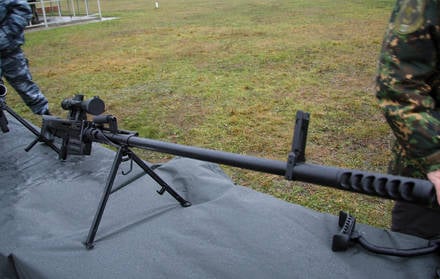
In Russia, at the beginning of the 1990-s, after other states, they began to carry out extensive research and development work to create an acceptable sample of a large-caliber sniper rifle. And over the course of 10 – 15 years, Russian gunsmiths have created a whole range of large-caliber 12,7- and 14,5-mm rifles (according to the national classification, large-caliber rifles of more than 9 mm diameter are considered).
One of the first such samples in Russia was for the first time an experienced 1994-mm self-loading sniper rifle B-12,7, developed at the Tula Instrumented Design Bureau (KBP) in Tula, headed by A. G. Shipunov, openly presented in 94 year. The range of tasks facing these weapons was extremely wide. Taking into account the fact that probable targets may have high mobility and for their guaranteed defeat may require not one - two, but a whole series of shots, this led to the fact that the new weapon was automatic. In this case, the combat capabilities of the rifle allowed that the sniper himself remained out of range of accurate fire from the enemy’s small arms.
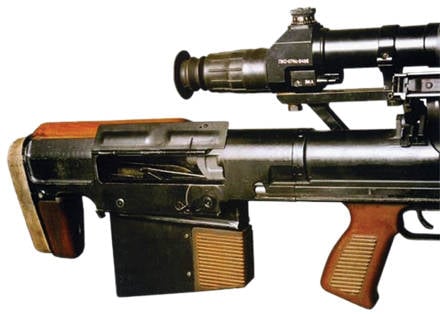
B-94 rifle is made on the classic layout. The rifle is a self-loading weapon, in which the locking and unlocking of the barrel, removing the spent case from the chamber and reflecting it, feeding the cartridge from the magazine and sending it to the chamber is done automatically. Work automation based on the energy of powder gases. When fired, the powder gases through the gas vents in the bore and the holder act on the piston in the gas cylinder, which pushes the bolt carrier back. The vapor tube is located above the barrel on the left. When the slide bolt is rolled back, the barrel bore is unlocked, the cartridge case is removed and reflected, the spring is compressed, the trigger is cocked, and the next cartridge is fed from the magazine to the dising line in the chamber. Under the action of the return spring slide frame returns to the front position. Locking the bore by turning the shutter in the interaction of the leading ledge of the shutter with the figured groove of the skeleton of the bolt carrier. The shutter has four lugs that engage with the breech's stops when locking the barrel and perceive the force of pressure of powder gases to the bottom of the sleeve during a shot. On the breech of the barrel on the thread installed breech, perceiving the load from the shot through the lugs. Insert, placed inside the breech, provides a preliminary reversal of the bolt when locking the barrel. The trigger-type trigger mechanism assembled in a removable shoe can only be fired by single shots. The rifle has a safety catch. A sufficiently high recoil force of a powerful cartridge is absorbed by a two-chamber muzzle brake of the original design and a shoulder rest, which is equipped with a shock-absorbing rubber nape. Butt - wooden, unregulated in length or height. The main body to hold a weapon when firing is a plastic pistol grip. The reloading handle is located to the right of the receiver. Power is supplied from a detachable box-shaped metal shop with a staggered arrangement of 5 cartridges. Extraction of spent cartridges made to the right. In the design of the B-94 rifle, the Tula designers managed to solve very originally one of the main problems characteristic of all large-caliber rifles - to reduce their overall length too great. Therefore, the B-94 was made collapsible - in the area of the breech of the trunk a hinge was mounted, and when folded, the weapon has a short length, which makes it convenient to transport the weapon. The fact that such a property of a rifle is very useful is indicated by its dimensions in the firing position, when the length of the weapon is 1746 mm. With such a weapon, it is not very convenient to climb or, on the contrary, to land out through narrow escape hatches in armored vehicles or in a helicopter. But when folded, the total length of the weapon is 1154 mm, and the width and thickness of 125 and 196 mm. In the stowed position, the barrel of the rifle, together with the vapor system, leans back and to the right and is secured by a latch on the back of the receiver. To prevent clogging of the barrel and mechanisms, the breech section and barrel are overlapped with a special lever mechanism. In the middle of the rifle on the trunk near the center of gravity mounted flip handle for easy carrying. It has two fixed positions: in the direction of the breech - to carry the rifle in the combat position; in the direction of the muzzle of the barrel - to carry weapons in the folded (transport) position. Sufficient capacity of the 5-magazine and automatic reloading allow you to conduct aimed fire, if necessary at a high pace, reducing fatigue of the shooter. At the same time, the designers did not manage to straighten one important shortcoming inherent in this rifle - a very strong sound of a shot that not only unmasks the weapon on the ground, but also extremely negatively affects the shooter itself, since the shot literally hits the ears.
The convenience of aiming with a B-94 rifle is provided by a stable bipod and a well-balanced arrangement of mechanisms and parts. Aim shooting from this weapon is possible only from the stop; for this, the B-94 rifle is fitted with a folding bipod mounted on the barrel. The bipod hinge allows its rotation relative to the rifle in the transverse plane. In combination with the bipod design, it allows the rifle to fit any surface. In the stowed position, the bipod struts are fastened with a latch and deployed along the trunk. At the same time, the load of the trunk with the bipod and carrying handle somewhat worsened the conditions of its fluctuation when fired, which to some extent affected the accuracy of shooting.
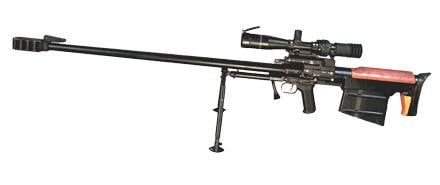
On the left wall of the receiver on a standard mount bracket mounted sight. Given the increased range of fire rifle in-94 can be completed as the modified optical sight PCP-1 with 4-fold magnification used in sniper rifle Dragunova and special day - 13-fold optical sight large increase PIC 13 h60 (weight 3,5 kg) or lightweight sight PIC 12 x56, as well as various devices such as laser designators of the visible and infrared range. The aiming range with an optical sight is set to 2000 m, although actually target shooting at such long ranges is problematic. Night Electron-optical sight with 5-fold increase allows conducting aimed shooting at nighttime at a distance of up to 600 m.
Ensuring high accuracy when shooting from this weapon required the creation of a special sniper cartridge. Despite the fact that the B-94 rifle can be fired with any 12,7 x108 mm ammunition, especially for it, the designers of the Ulyanovsk plant developed the 12,7 CH sniper cartridges of increased armor penetration and improved accuracy. This cartridge in the sniper version has a total mass of 141 g, with a mass of a bullet 56 g and a charge 17 g; the total length of the cartridge is 147 mm, the length of the sleeve - 108 mm, bullets - 64,6 mm. The head of this bullet is painted black. The “12,7 CH” bullet with a red-hot steel core provides 100% damage to the enemy's manpower over the entire range of aimed shooting. Sniper cartridges are manufactured with high precision manufacturing and smaller than standard ammunition tolerances - just as sports ammunition is produced, which made it possible to ensure better accuracy of fire. So, when firing at a range of 100 and a single fire with 4 – 5 series of shots, the dispersion width does not exceed 50 mm, which is approximately 1,5 times better than the accuracy of a regular 7,62-mm SVD sniper rifle. The accuracy of the B-94 rifle at a range of 300 m from a lying position 12,7-mm sniper cartridges "12,7 CH" is r100 - no more than 12 cm, and the deviation of the average point of impact from the aiming point - no more than 10. See It is important that the 12,7-mm bullet experiences a deviation from lateral drift in flight in 2,5 – 3 times smaller than the 7,62-mm bullet of a regular rifle cartridge. Similar qualities of 12,7-mm cartridges allowed to ensure the defeat of large targets from the first shot at a distance of up to 1200 m. In addition to the sniper cartridge "12,7 CH", other 94-mm cartridges can be used for firing from a B-12,7 rifle, including: with armor-piercing -zagi bullet B-32. The target range is 800 m.
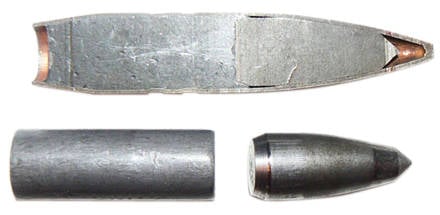
After a minor modernization, a decree of the Government of the Russian Federation on 28 December 1996 of the year, the B-94 sniper rifle, was adopted by the Ministry of Internal Affairs of the Russian Federation. However, despite its adoption, the work on improving the rifle continued. Of the external changes, the bipod mounting on the special bracket is most noticeable; the bipods themselves became adjustable, the muzzle brake design was different, the butt was made of plastic, the rifle received other sights and a carrying handle. The result of the work done was the creation of a new model, which, by resolution of the Government of the Russian Federation in March 2000, after state tests, was adopted by the Ministry of Internal Affairs under the symbol “12,7-mm sniper rifle OSV-96”. At present, the B-94 / OCB-96 rifle is in service with special units of the Interior Ministry, FSB and other security forces and is widely used in counterterrorism operations in the North Caucasus. Moreover, the B-94 sniper rifle did not replace the standard 7,62-mm self-loading sniper rifle of the Dragunov SVD, but supplemented the sniper’s weapons, significantly expanding its combat capabilities.
The use of small quantities of prototypes of large-caliber B-94 sniper rifles in the first Chechen war by federal forces, and the militants of large-caliber foreign-made sniper rifles proved the need to equip the Russian army and law enforcement agencies with such weapons. Therefore, in the 1995 year, in the framework of the “Burglar” theme, several design teams simultaneously started creating new 12,7-mm large-caliber sniper rifles.
So, in the Special Design Bureau (SPKB) Kovrovsky plant them. V. A. Degtyarev began research and development work on a new sniper rifle from 1995. Timing has been defined minimum. For several months it was necessary to determine the future type of rifle, develop its design and make a prototype. SPKB engineers presented their proposals on rifle design: V.I. Negrulenko, A.A. Namitulin, N. M. Obidin, M. Yu. Kuchin, E. V. Zhuravlev, Yu. M. Bogdanov, V. I. Zhirekhin . The constructive schemes of V.I. Negrulenko were taken as a basis, he became the leading designer of the large-caliber sniper rifle project, which initially received the factory index "SVN-98" (Negrulenko sniper rifle), soon replaced by "SVN-12,7" (Negrulenko sniper rifle under cartridge caliber 12,7 mm). Together with Negrulenko, M.Yu. Kuchin and E. V. Zhuravlev were engaged in the development of the rifle from beginning to end. In the course of work on the weapon, the rifle received its new name “KSVK” (a large-caliber Kovrov sniper rifle). As this topic developed, other designers were connected to it: S. A. Zaitsev, K. E. Krasavin, D. E. Smirnov, N. A. Napalkov, L. E. Kontorschikova. It was this design team that brought the KSVK sniper rifle to state tests. Moreover, in 2001, the sniper rifle of Kovrov gunsmiths, which had not yet passed state tests, had already won a tender for the supply to the Border Troops of the Russian Federation. The KSVK rifle was preferred even by the Tula OSV-96 because it was convenient for firing at long distances in the mountains and gorges at a distance of 1500 meters. The KSVK rifles were actively used by border guards in the fight against drug traffickers in Tajikistan, as well as in operational troop events held FSB frontier troops in the republics of the North Caucasus.
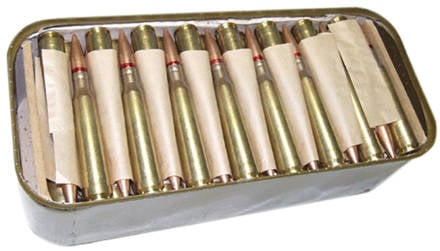
After being adopted by the Ministry of Defense of the Russian Federation and the Ministry of Internal Affairs of Russia, this slightly modernized rifle in the final version received a new name “ASVK” (large-caliber army sniper rifle). The KNA sniper rifle is designed to destroy lightly armored and unarmored weapons, military equipment at ranges up to 1000 m, as well as openly located manpower in personal protective equipment at ranges up to 1500 m.
The KAFK rifle is a large-caliber weapons magazine, assembled according to the bullpup scheme. For shooting from this rifle 12,7-mm sniper cartridges 12,7 CH are used. The barrel is locked with a longitudinal sliding bolt, powered from a detachable box magazine with an 5 capacity of cartridges. Massive free-floating barrel, made by cold forging and equipped with longitudinal lobes to reduce vibrations, cantilever hung and does not come into contact with other parts of the rifle. A multi-slot muzzle brake compensator is mounted on the barrel, which reduces the recoil force 2,5 times, and also masks the flash of the muzzle flame when fired at night and to some extent, reduces the level of the shot sound. The reloading handle is located on the right above the pistol grip. There is a folding handle for carrying. The receiver window in the stowed position is closed by a spring-loaded lid, the latch of which also serves as a safety lever. The rifle is equipped with a standard strap for mounting sights and can be equipped with various optical day and night sights. In addition, the rifle has an open mechanical sector sight, which can be used in case of damage to optical sights. On the left side of the receiver is mounted unregulated "cheek". The front of the store is equipped with an overlay for easy holding the weapon with your left hand while firing from a bipod. Folding bipod located under the barrel on a special bracket so that the rifle can rotate around them in the longitudinal and transverse planes. The shoulder rest on the back plate of the receiver is equipped with a rubber butt pad-shock absorber. In advertising brochures Kovrovsky plant them. Degtyarev indicated that the KAFK sniper rifle has an average accuracy of about 16 cm at a range of 300 meters.
At the end of the 1990-s, another 9-mm large-caliber SVDK sniper rifle was developed as part of the "Burglar" theme. This weapon was developed in order to exceed the level of the penetrating action of a regular SVD rifle, while remaining at approximately the same level with it according to other characteristics. The main tasks of the new large-caliber self-loading sniper rifle included: defeat the enemy personnel protected by personal protective equipment (heavy body armor) or hiding behind light obstacles, as well as defeat unarmored vehicles. The new sniper rifle was designed to use a large-caliber rifle sniper cartridge 9,3 x64 (GRAU index - 7 Н33) with a brass sleeve, created at TsNIITOCHMASH based on the 9,3 x64 hunting cartridge Brenneke. The 7 H33 sniper cartridge has a 16,5 gram bullet with a steel core. The initial speed of the bullet when firing from the SVDK is 770 m / s.
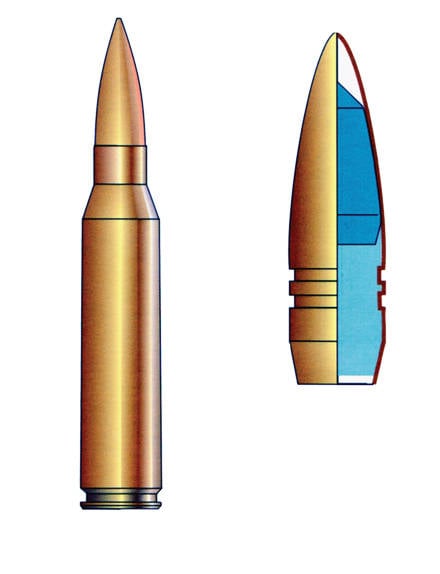
In terms of its design, the SVDK rifle is a further development of the SVD Dragunov sniper rifle, however, the receiver box, bolt group and gas outlet unit have been redesigned for a larger and more powerful cartridge. The original versions of the SVDK rifle, created on the basis of the 9-mm hunting self-loading carbine "TIGR-9" (using the structural elements of the SVD rifle), differed from it only in an elongated barrel; shop new design capacity 10 cartridges; folding butt; integral bipods and several options for detachable flame arresters. However, later, when the insufficient strength of the receiver was revealed, its design had to be redone anew, which is called from scratch. The receiver has become more massive, thick-walled and, as a result, has received increased mass-dimensional characteristics. The barrel of the rifle, more massive and thick compared to the barrel of the TIGER-9 carbine, is practically hung out - it is laid in a steel perforated casing that unloads the barrel from the loads attached to the forearm or bipod. The casing itself is completely hidden inside the plastic forearm. From the receiver, under the trunk there is a tire on which an integral two-legged fry is mounted with the possibility of folding and fixing the struts, through slots in the barrel linings. The pistol grip and side folding and a slightly modified metal butt were inherited from the SVD-S rifle, but the area of the rubber unregulated butt plate had to be significantly increased due to the increased recoil of the weapon. The SVDK rifle is equipped with open adjustable sights and a special strap mounted on the left side of the receiver to install quick-release brackets for optics, the base for mounting and mounting the telescopic sight has also changed and received a different design from the SVD. The flame arrester, in fact, repeats the design of the integral slit-type flame arrester of the SVD rifle, but it has a slightly more simplified external profile, without the stand of the bayonet-knife with the lack of the possibility of its installation. Meals are supplied from a detachable magazine with a capacity of 10 cartridges. The main rifle optical sight is the 1 P70 “Hyperon” sight of variable magnification (from 3 to 10 fold). It is produced Krasnogorsk optical-mechanical plant them. Zverev). In addition, the 1 PN112 day-night optical sight (manufactured by the FSUE “ON Oil Refinery named after Lenin "). The sight has a built-in adjustment of the aiming mark in range, however, it is notable for its large mass and increased cost (as compared with Western analogues). The order of rifle disassembly was somewhat simplified relative to the SVD-S - by eliminating the need to shift the front ring to separate the barrel linings and disassemble the gas engine. The characteristics of the SVDK rifle for accuracy are almost completely consistent with the characteristics of the 7,62-mm SVD sniper rifle - the average accuracy when shooting at a range of 300 m is 180 mm. The 7 H33 sniper cartridge bullet when firing from the SVDK has a muzzle energy of the order of 4900 J and provides 80% penetration of the armor plate 10 mm thick at a distance of 100 m. The effective firing range for the SVDK is announced by the manufacturing plant - up to 600 meters.
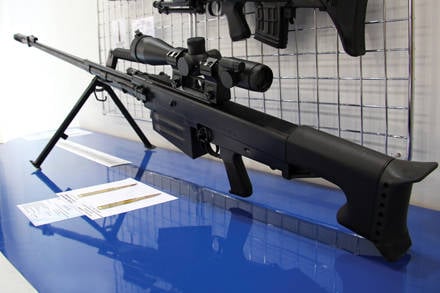
At present, after passing extensive state tests within the framework of the ROC on the subject "Burglar", this rifle, adopted by the Russian army in 2006 under the name "SVDK" (Dragunov sniper rifle, is large-scale) (GRAU index - 6 В9) is produced in small quantities batches and has already begun to enter the troops.
In 2002, another team of Russian gunsmiths - the Tula TsKIB SOO (Central Design Bureau of Sports and Hunting Weapons, now a branch of the Instrument Design Bureau) introduced the new 12,7-mm sniper complex under the designation “Exhaust”. This development work was begun in 1999 year by the special order of the Center for Special Purpose (CSN) of the FSB of Russia. After completion in 2004, this complex entered service with the FSB. For the first time, it was openly presented in 2005 at the international exhibition Interpolitech in Moscow. The trial operation of this complex by special forces units of the Special Operations Center of the Federal Security Service of Russia under combat conditions was successful. When creating a silent large-caliber sniper rifle, the VSSK Vykhlop maximally took into account the specifics of such weapons, which made it possible to combine them with minimal unmasking signs of a shot with the ability to defeat an enemy protected by means of individual armor or located behind various obstacles (door, glazing, thin wall , car trim, etc.), as well as technical and enemy vehicles. At the same time, in terms of mass and size, this rifle was able to fit into the mass-dimensional characteristics of a standard sniper rifle of normal caliber.
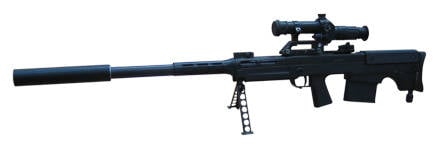
The VKS / VSSK Vykhlop sniper rifle is designed for low-noise and flameless destruction of protected targets (cars and other unarmored vehicles, living force in heavy body armor or in vehicles, etc.) at ranges up to 600 meters. At the same time, due to the use of a bullet with a subsonic initial speed (of the order of 290 –295 m / s) in combination with an effective silencer, a significant reduction in the sound level of the shot is provided (the volume of the shot does not exceed 123 dB). The sound level of the “Exhaust” rifle is between the 4,5-mm air rifle (which corresponds to 101 dB) and the clap of the palms.
The “Exhaust” complex includes a “large-caliber special rifle” (VKS), also known under the designation “special-caliber sniper rifle (VSSK)”, a removable silencer (PBS) and special 12,7-mm cartridges with subsonic bullet speed:
- sniper cartridge SC-130 PT;
- sniper cartridge SC-130 PT 2 increased accuracy with a solid (one-component) bronze bullet;
- sniper cartridge SP-130 UPU with high penetrating ability;
- training cartridge SC-130 PU.
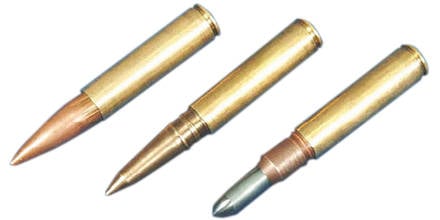
In special-made cartridges, with a relatively short cylindrical sleeve, the total length of the cartridge is 97 mm (compared to the total length 145 mm of the standard large-caliber cartridge 12,7 x108). The high effectiveness of the action of the new weapon on the target was achieved by using new heavy heavy bullets, in addition, their relatively small muzzle energy allowed the rifle to be designed almost two and a half to three times lighter than other large caliber sniper rifles designed to use 12,7-mm sniper rifles. cartridge "12,7 CH".
The sniper special large-caliber rifle VKS / VSSK “Vyhlop” is made according to the “bullpup” scheme with the location of the magazine behind the pistol grip of the fire control and has an integrated device for a silent-flameless shot (silencer), removed during transportation or during weapon cleaning. The “Exhaust” rifle has a sliding bolt with a straight (i.e., without turning) movement of the reloading handle. Locking the barrel is carried out by a rotating combat person lock bolt. Single row detachable box magazine with a capacity of 5 cartridges. On the top of the receiver rifle mounted mount for a variety of optical or night sights, in addition, the rifle is equipped with open sights (front and whole), made on folding grounds. In front of a short plastic forearm, a folding bipod is mounted.
Currently, a special sniper complex "Exhaust" (index 6 С8) is in service with the divisions of the special-purpose center of the FSB of Russia. The result of significant joint efforts of domestic gunsmiths and ammunition designers was the creation in 1990-xNXX-s of fundamentally new sniper complexes “ammunition-weapon”, which are currently among the best in the world. Russian security forces today have all types of sniper weapons, including modern large-caliber sniper rifles.
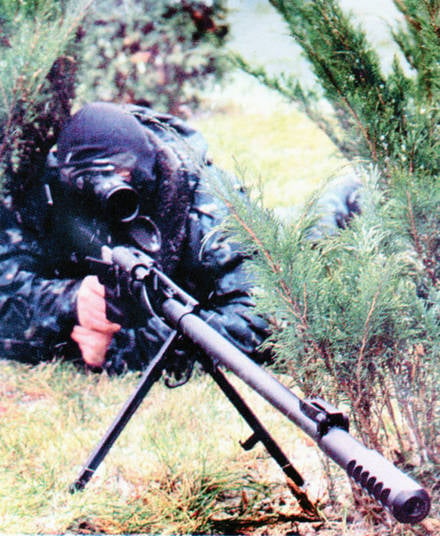
Information